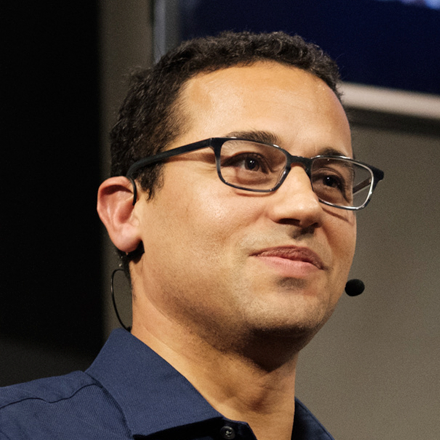
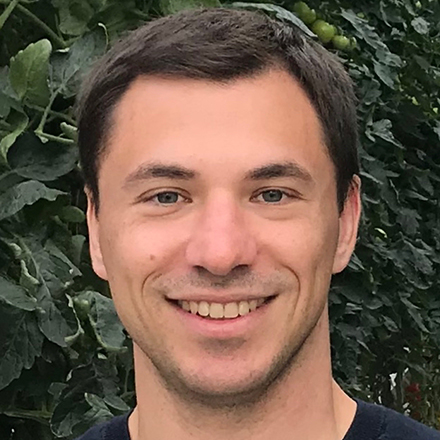
Title: Unistellar Citizen Science: testing and validating our new science tools
Description:
Unistellar’s eVscope is a user-friendly light-amplifying telescope that allows citizen astronomers to observe the universe, either from downtown or the countryside, in unprecedented clarity and detail. Thanks to our partnership with the SETI Institute and the Moore Foundation, every eVscope user will also be able to join a global network of observers conducting coordinated, worldwide viewing campaigns under the aegis of professional astronomers.
We are looking for 1 or 2 interns to work with our team at the SETI Institute and Unistellar to conduct observations in the framework of our scientific programs (transiting exoplanets, occultations by asteroids, cometary activity and planetary defense), test and validate our tools, process acquired observations using our AWS server, and published scientific results together with our network of citizen astronomers (more than 400 active users at the moment).
Qualifications:
Applicants should have a good knowledge of the Python programming language, a strong interest in observational astronomy, and ideally a driving license so they can travel to observing sites. Although not required, good knowledge of the French, Japanese, and/or Arabic languages would be a plus.
Description:
Unistellar’s eVscope is a user-friendly light-amplifying telescope that allows citizen astronomers to observe the universe, either from downtown or the countryside, in unprecedented clarity and detail. Thanks to our partnership with the SETI Institute and the Moore Foundation, every eVscope user will also be able to join a global network of observers conducting coordinated, worldwide viewing campaigns under the aegis of professional astronomers.
We are looking for 1 or 2 interns to work with our team at the SETI Institute and Unistellar to conduct observations in the framework of our scientific programs (transiting exoplanets, occultations by asteroids, cometary activity and planetary defense), test and validate our tools, process acquired observations using our AWS server, and published scientific results together with our network of citizen astronomers (more than 400 active users at the moment).
Qualifications:
Applicants should have a good knowledge of the Python programming language, a strong interest in observational astronomy, and ideally a driving license so they can travel to observing sites. Although not required, good knowledge of the French, Japanese, and/or Arabic languages would be a plus.
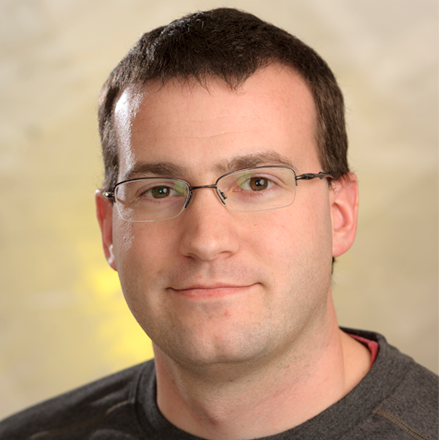
Title: The Asteroid Threat: How do we assess the risk from asteroid impacts?
Description:
Life-threatening asteroids are, fortunately, very rare. So how do we scientifically assess the risk of very rare events? Answer: we study things that are much more common and extrapolate! The Geostationary Lightning Mapper (GLM) instruments onboard the GOES 16 and 17 weather satellites are designed to detect lightning but can also detect other bright flashes in Earth's atmosphere. GLM provides a unique opportunity to detect a large variety of bright meteors, including those in the 0.1 to 3 m diameter range that can explode when entering the Earth’s atmosphere (called bolides). We have developed a machine learning based bolide detection and light curve generation pipeline as part of NASA’s Asteroid Threat Assessment Project (ATAP). With the pipeline running for over two years now, we have assembled a vast and unique catalogue of bright meteors using a consistent and wide field of view.
It's now time to analyze the data! For this project the student will collect and process the data set and develop statistical models of meteor populations. What is the size distribution of meteors? Are there preferred impact regions across the globe or are they evenly distributed? How do meteors typically break up as they travel through the atmosphere? What is the incoming trajectory of the objects and where in the solar system did they originate? These and other fundamental questions can now be answered and will help us understand both the threat to Earth due to large asteroids and also the origin and evolution of our solar system.
Qualifications:
The ideal student would already be familiar with either the Python or Matlab programming language and have experience processing large data sets. A basic understanding or a desire to learn more about detection and population statistics would be beneficial.
Description:
Life-threatening asteroids are, fortunately, very rare. So how do we scientifically assess the risk of very rare events? Answer: we study things that are much more common and extrapolate! The Geostationary Lightning Mapper (GLM) instruments onboard the GOES 16 and 17 weather satellites are designed to detect lightning but can also detect other bright flashes in Earth's atmosphere. GLM provides a unique opportunity to detect a large variety of bright meteors, including those in the 0.1 to 3 m diameter range that can explode when entering the Earth’s atmosphere (called bolides). We have developed a machine learning based bolide detection and light curve generation pipeline as part of NASA’s Asteroid Threat Assessment Project (ATAP). With the pipeline running for over two years now, we have assembled a vast and unique catalogue of bright meteors using a consistent and wide field of view.
It's now time to analyze the data! For this project the student will collect and process the data set and develop statistical models of meteor populations. What is the size distribution of meteors? Are there preferred impact regions across the globe or are they evenly distributed? How do meteors typically break up as they travel through the atmosphere? What is the incoming trajectory of the objects and where in the solar system did they originate? These and other fundamental questions can now be answered and will help us understand both the threat to Earth due to large asteroids and also the origin and evolution of our solar system.
Qualifications:
The ideal student would already be familiar with either the Python or Matlab programming language and have experience processing large data sets. A basic understanding or a desire to learn more about detection and population statistics would be beneficial.
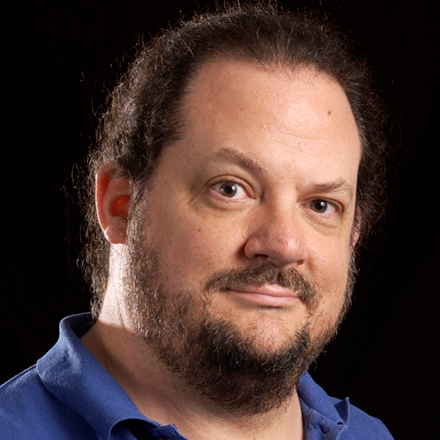
Title 1: Detection of Organics and Biomarkers
Description:
Dr Dave Summers investigates a wide range of chemical reactions that are either needed for life to begin, that may affect whether life can exist, or that might be used by scientists to recognize life elsewhere.
We are currently studying the detection of biomarkers - organic compounds that represent biosignatures of life - in mineral samples. We study where they can be found, how they can be found, and why they are there. This is so we can better search for biosignatures when we look for life on Mars. This project, in collaboration with other members of the SETI Institute’s team in the NASA Astrobiology Institute, will use IR microscope methods to detect and characterize organic samples that have been obtained from the Atacama desert.
Title 2: Non-biological reactions of nitrogen compounds on ancient Mars
Description:
Where is the nitrogen on Mars? This project studies the chemistry of nitrogen compounds on past and present Mars to better understand what nitrogen compounds existed on Mars and how that may have changed over time. This is important to understand the habitability of Mars over time and the prospects for ancient life on Mars. The work involves setting up experiments and/or running reactions that may have been important on Mars and analyzing the results.
Qualifications:
Some biology or chemistry lab experience is preferred.
Description:
Dr Dave Summers investigates a wide range of chemical reactions that are either needed for life to begin, that may affect whether life can exist, or that might be used by scientists to recognize life elsewhere.
We are currently studying the detection of biomarkers - organic compounds that represent biosignatures of life - in mineral samples. We study where they can be found, how they can be found, and why they are there. This is so we can better search for biosignatures when we look for life on Mars. This project, in collaboration with other members of the SETI Institute’s team in the NASA Astrobiology Institute, will use IR microscope methods to detect and characterize organic samples that have been obtained from the Atacama desert.
Title 2: Non-biological reactions of nitrogen compounds on ancient Mars
Description:
Where is the nitrogen on Mars? This project studies the chemistry of nitrogen compounds on past and present Mars to better understand what nitrogen compounds existed on Mars and how that may have changed over time. This is important to understand the habitability of Mars over time and the prospects for ancient life on Mars. The work involves setting up experiments and/or running reactions that may have been important on Mars and analyzing the results.
Qualifications:
Some biology or chemistry lab experience is preferred.
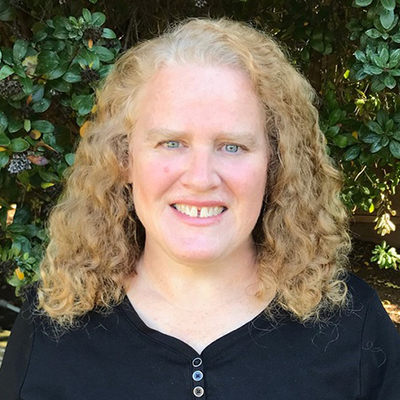
Title: Fluvial and hydrothermal studies of the surface of Mars
Description:
Dr. Ginny Gulick examines erosional features on Mars, looking for the tell-tale signs of running water in Mars’ geological history. Some of the meandering valley networks that lace the landscape may indicate that Mars was a warmer, wetter world billions of years ago. But other features, including gullies found around many impact craters and valley walls, may be evidence of water that flowed on the martian surface more recently.
Dr. Gulick uses stereo images and Digital Terrain Models (DTMs) from Mars-orbiting cameras including HiRISE, CTX, and HRSC to look for features caused by flowing water (“fluvial” features) or by heated groundwater (“hydrothermal” features). The current project is focused on understanding gully formation in Mars’ more recent geological history, by studying their 3D slope morphology, their spatially association landforms, and their topographic and environmental settings. However, we are also interested in understanding the formational environments of channels, valleys, and paleolakes throughout Mars’s geological history. We will use information from terrestrial analog sites, hydrologic models, and DTMs to estimate water discharges, volumes, and erosion rates to better understand the implications for paleoclimatic change. Opportunities are also available for HiRISE science operations support, including help with science planning and targeting, and analysis of acquired data.
Qualifications:
Students with a geology, geography, or hydrology background with an emphasis in geomorphology and experience with computer software ArcGIS and/or ENVI are strongly desired. Experience with Python and/or MatLab preferred.
Description:
Dr. Ginny Gulick examines erosional features on Mars, looking for the tell-tale signs of running water in Mars’ geological history. Some of the meandering valley networks that lace the landscape may indicate that Mars was a warmer, wetter world billions of years ago. But other features, including gullies found around many impact craters and valley walls, may be evidence of water that flowed on the martian surface more recently.
Dr. Gulick uses stereo images and Digital Terrain Models (DTMs) from Mars-orbiting cameras including HiRISE, CTX, and HRSC to look for features caused by flowing water (“fluvial” features) or by heated groundwater (“hydrothermal” features). The current project is focused on understanding gully formation in Mars’ more recent geological history, by studying their 3D slope morphology, their spatially association landforms, and their topographic and environmental settings. However, we are also interested in understanding the formational environments of channels, valleys, and paleolakes throughout Mars’s geological history. We will use information from terrestrial analog sites, hydrologic models, and DTMs to estimate water discharges, volumes, and erosion rates to better understand the implications for paleoclimatic change. Opportunities are also available for HiRISE science operations support, including help with science planning and targeting, and analysis of acquired data.
Qualifications:
Students with a geology, geography, or hydrology background with an emphasis in geomorphology and experience with computer software ArcGIS and/or ENVI are strongly desired. Experience with Python and/or MatLab preferred.
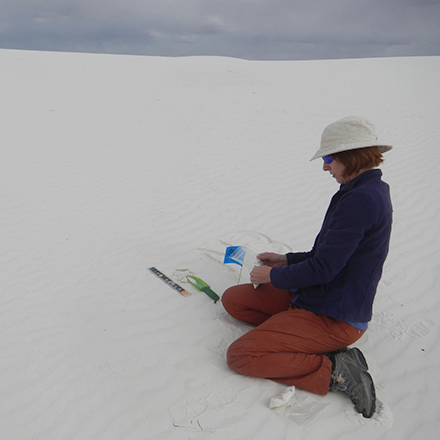
Title: Details in the devils: Environmental controls of dust devil physical characteristics
Description:
Dr. Lori Fenton’s research involves studying evidence for recent climate change on Mars, with a focus on aeolian (wind-blown) processes. This includes atmospheric modeling of near-surface wind conditions, morphologic studies of windblown landscapes (e.g., ripples, dunes, yardangs) and phenomena (e.g., dust devils), and analog field studies to better understand how similar features and processes occur on Mars.
Dust devils are swirls of air that loft dust and other small debris off the ground in dry regions on Earth. Unlike tornadoes that form from shear generated during thunderstorms, dust devils seem to appear out of nowhere on warm, cloudless days. Dust devils are also common on Mars, where dust is plentiful and the weather is most often clear. What can we learn about environmental controls on Mars dust devils (that is, how tall and wide they grow, how densely packed they are, etc.) by studying those that form on Earth? Can we then use observations of dust devils on Mars to infer local weather conditions? Field campaigns to a Nevada site in 2019 and 2021 produced a vast data set full of dust devil images and the meteorological conditions in which they form. The student will help discover the physical characteristics of these dust devils and what makes them change.
Qualifications:
Some background in geology or meteorology is preferred, as is image analysis. However, the project can be scaled to the experience level of the student.
Description:
Dr. Lori Fenton’s research involves studying evidence for recent climate change on Mars, with a focus on aeolian (wind-blown) processes. This includes atmospheric modeling of near-surface wind conditions, morphologic studies of windblown landscapes (e.g., ripples, dunes, yardangs) and phenomena (e.g., dust devils), and analog field studies to better understand how similar features and processes occur on Mars.
Dust devils are swirls of air that loft dust and other small debris off the ground in dry regions on Earth. Unlike tornadoes that form from shear generated during thunderstorms, dust devils seem to appear out of nowhere on warm, cloudless days. Dust devils are also common on Mars, where dust is plentiful and the weather is most often clear. What can we learn about environmental controls on Mars dust devils (that is, how tall and wide they grow, how densely packed they are, etc.) by studying those that form on Earth? Can we then use observations of dust devils on Mars to infer local weather conditions? Field campaigns to a Nevada site in 2019 and 2021 produced a vast data set full of dust devil images and the meteorological conditions in which they form. The student will help discover the physical characteristics of these dust devils and what makes them change.
Qualifications:
Some background in geology or meteorology is preferred, as is image analysis. However, the project can be scaled to the experience level of the student.
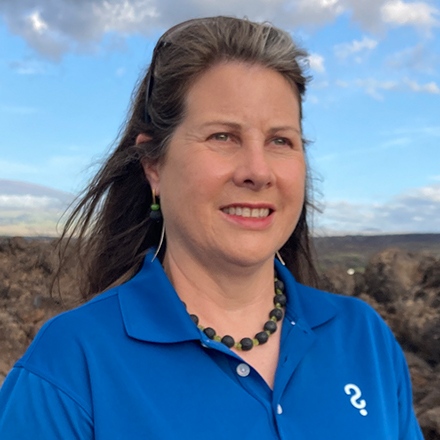

Title: Characterizing enigmatic dunes on Mars using HiRISE morphology and CRISM mineralogy
Description:
Dr. Janice Bishop’s research involves characterizing the surface of Mars using hyperspectral visible/near-infrared (VNIR) images of Mars collected by the CRISM spectrometer on MRO (http://crism.jhuapl.edu). My group is interested in studying the geochemical environment of Mars through detection of phyllosilicates, sulfates, and other aqueous minerals.
Dr. Lori Fenton’s research involves studying evidence for recent climate change on Mars, with a focus on aeolian (wind-blown) processes. This includes atmospheric modeling of near-surface wind conditions, morphologic studies of windblown landscapes (e.g., ripples, dunes, yardangs) and phenomena (e.g., dust devils), and analog field studies to better understand how similar features and processes occur on Mars.
Dr. Bishop and Dr. Fenton are seeking a summer intern to study the North Polar sand seas of Mars, which has been influenced by several geologic processes and contains basalt, sulfates, and ice. We will be working together to investigate a few sites using data from two instruments on board the Mars Reconnaisance Orbiter – spectra from CRISM and images from HiRISE – to document the formation of the dunes and the types of mineralogy.
The student will learn how to evaluate HiRISE images of Mars to document and characterize geologic processes. The student will also learn how to collect spectra from CRISM images and compare these with lab spectra of minerals. Additionally, in our laboratory we will measure spectra of Mars-analog rocks and relate these to CRISM spectra of Mars. The student will master how to measure reflectance spectra of geologic samples, how to use several image processing techniques, and how to identify different materials based on spectral features (e.g. clays, sulfates, basalt).
Qualifications:
The ideal candidate would have at least one year each of chemistry, physics, geology, and some knowledge of mineralogy. Experience measuring the spectral properties of rocks and/or using CRISM spectra of Mars is a plus, but not required. Familiarity with KaleidaGraph, IDL or ENVI software would also be helpful because we’ll be using those over the summer. This project is suitable for a student interested in mineralogy, remote sensing, or planetary geology.
Description:
Dr. Janice Bishop’s research involves characterizing the surface of Mars using hyperspectral visible/near-infrared (VNIR) images of Mars collected by the CRISM spectrometer on MRO (http://crism.jhuapl.edu). My group is interested in studying the geochemical environment of Mars through detection of phyllosilicates, sulfates, and other aqueous minerals.
Dr. Lori Fenton’s research involves studying evidence for recent climate change on Mars, with a focus on aeolian (wind-blown) processes. This includes atmospheric modeling of near-surface wind conditions, morphologic studies of windblown landscapes (e.g., ripples, dunes, yardangs) and phenomena (e.g., dust devils), and analog field studies to better understand how similar features and processes occur on Mars.
Dr. Bishop and Dr. Fenton are seeking a summer intern to study the North Polar sand seas of Mars, which has been influenced by several geologic processes and contains basalt, sulfates, and ice. We will be working together to investigate a few sites using data from two instruments on board the Mars Reconnaisance Orbiter – spectra from CRISM and images from HiRISE – to document the formation of the dunes and the types of mineralogy.
The student will learn how to evaluate HiRISE images of Mars to document and characterize geologic processes. The student will also learn how to collect spectra from CRISM images and compare these with lab spectra of minerals. Additionally, in our laboratory we will measure spectra of Mars-analog rocks and relate these to CRISM spectra of Mars. The student will master how to measure reflectance spectra of geologic samples, how to use several image processing techniques, and how to identify different materials based on spectral features (e.g. clays, sulfates, basalt).
Qualifications:
The ideal candidate would have at least one year each of chemistry, physics, geology, and some knowledge of mineralogy. Experience measuring the spectral properties of rocks and/or using CRISM spectra of Mars is a plus, but not required. Familiarity with KaleidaGraph, IDL or ENVI software would also be helpful because we’ll be using those over the summer. This project is suitable for a student interested in mineralogy, remote sensing, or planetary geology.
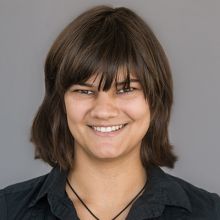

Title 1: Characterizing repeating Fast Radio Bursts with the Allen Telescope Array
Description:
Fast Radio Bursts (FRBs) are mysterious, high-energy bursts of radio emission whose origin is still unknown. It is likely that FRBs are an extragalactic phenomenon, perhaps produced by energetic magnetars, but we need more data on their emission (especially over large bandwidths and at high frequencies) to understand the objects that cause them. In this project, the REU student will select a repeating FRB and observe it with the wideband receivers of the Allen Telescope Array. The student will characterize parameters such as the brightness of the FRB at different frequencies and the repetition rate and statistics of the bursts.
Title 2: Searching for radio technosignatures with the Allen Telescope Array
Description:
Radio waves are low-energy, travel at the speed of light, and are not blocked by gas and dust. For these reasons (among many others), it is hypothesized that extraterrestrial intelligences (ETIs) might use radio transmitters to send signals across the galaxy. We might be able to detect these radio “technosignatures” using radio instruments such as the Allen Telescope Array (ATA). In this project, the REU student will select a technosignature target and observe it with the ATA. The student will then use existing software such as turboSETI and SPANDAK to perform a novel, in-depth technosignature search of that target, with the goal of setting the strictest upper limits ever for the chosen target (or detecting ETI!).
Title 3: Measuring wideband scintillation of pulsars with the Allen Telescope Array
Description:
Pulsars are rapidly-rotating neutron stars with high magnetic fields; these properties combined create the appearance of pulsed radio emission. While pulsars are fascinating in and of themselves, they also can be used as probes of the interstellar medium (ISM), the gas and dust that fills the galaxy. As the pulsar’s emission travels through the ISM, it is distorted in particular ways that inform us about the material that it passed through. One of these distortions is scintillation, the brightening and darkening of the pulsar’s emission - the characteristic bandwidth and timescale of the scintillation inform us about the average density of the ISM in that direction of the sky. In this project, the REU student will select a pulsar with scintillation bandwidths and timescales amenable to observation with the Allen Telescope Array (ATA), and observe it with the ATA’s wideband receivers. The student will then analyze the data with existing software such as PyPulse, and produce high-quality measurements of the scintillation parameters to compare to existing ISM models.
Description:
Fast Radio Bursts (FRBs) are mysterious, high-energy bursts of radio emission whose origin is still unknown. It is likely that FRBs are an extragalactic phenomenon, perhaps produced by energetic magnetars, but we need more data on their emission (especially over large bandwidths and at high frequencies) to understand the objects that cause them. In this project, the REU student will select a repeating FRB and observe it with the wideband receivers of the Allen Telescope Array. The student will characterize parameters such as the brightness of the FRB at different frequencies and the repetition rate and statistics of the bursts.
Title 2: Searching for radio technosignatures with the Allen Telescope Array
Description:
Radio waves are low-energy, travel at the speed of light, and are not blocked by gas and dust. For these reasons (among many others), it is hypothesized that extraterrestrial intelligences (ETIs) might use radio transmitters to send signals across the galaxy. We might be able to detect these radio “technosignatures” using radio instruments such as the Allen Telescope Array (ATA). In this project, the REU student will select a technosignature target and observe it with the ATA. The student will then use existing software such as turboSETI and SPANDAK to perform a novel, in-depth technosignature search of that target, with the goal of setting the strictest upper limits ever for the chosen target (or detecting ETI!).
Title 3: Measuring wideband scintillation of pulsars with the Allen Telescope Array
Description:
Pulsars are rapidly-rotating neutron stars with high magnetic fields; these properties combined create the appearance of pulsed radio emission. While pulsars are fascinating in and of themselves, they also can be used as probes of the interstellar medium (ISM), the gas and dust that fills the galaxy. As the pulsar’s emission travels through the ISM, it is distorted in particular ways that inform us about the material that it passed through. One of these distortions is scintillation, the brightening and darkening of the pulsar’s emission - the characteristic bandwidth and timescale of the scintillation inform us about the average density of the ISM in that direction of the sky. In this project, the REU student will select a pulsar with scintillation bandwidths and timescales amenable to observation with the Allen Telescope Array (ATA), and observe it with the ATA’s wideband receivers. The student will then analyze the data with existing software such as PyPulse, and produce high-quality measurements of the scintillation parameters to compare to existing ISM models.
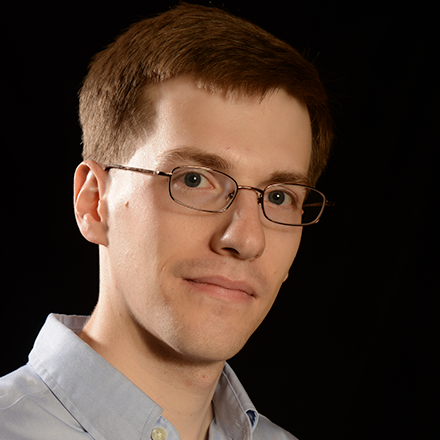
Title: Radar Astronomy and Boulders on Near-Earth Asteroids
Description:
The near-Earth asteroids are a population of objects on orbits that come near Earth’s orbit around the Sun. They are interesting as spacecraft mission targets, as potential impact hazards, and as unusual physical environments. Several near-Earth asteroids have been visited by spacecraft, and several hundred more have been imaged with Earth-based astronomical radars. These observations have shown that most of these objects are complex “rubble pile” aggregates; with widely varying shapes, spin states, and surface features. On some asteroids, sorting processes have separated out fine-grained dust from large boulders. On others, material is more uniformly mixed.
This project will use archival radar images of a selected asteroid that has not been studied in detail before; to produce a model of the asteroid’s shape & spin state, and to map out the distribution of boulders and other features on its surface for comparison to other objects. This is a contribution to a long-running effort to understand that full range of variation throughout the near-Earth population.
In addition, depending on scheduling, there may be opportunities to participate remotely in radar observations of newly-discovered asteroids with the Goldstone Solar System Radar, located in southern California.
Description:
The near-Earth asteroids are a population of objects on orbits that come near Earth’s orbit around the Sun. They are interesting as spacecraft mission targets, as potential impact hazards, and as unusual physical environments. Several near-Earth asteroids have been visited by spacecraft, and several hundred more have been imaged with Earth-based astronomical radars. These observations have shown that most of these objects are complex “rubble pile” aggregates; with widely varying shapes, spin states, and surface features. On some asteroids, sorting processes have separated out fine-grained dust from large boulders. On others, material is more uniformly mixed.
This project will use archival radar images of a selected asteroid that has not been studied in detail before; to produce a model of the asteroid’s shape & spin state, and to map out the distribution of boulders and other features on its surface for comparison to other objects. This is a contribution to a long-running effort to understand that full range of variation throughout the near-Earth population.
In addition, depending on scheduling, there may be opportunities to participate remotely in radar observations of newly-discovered asteroids with the Goldstone Solar System Radar, located in southern California.
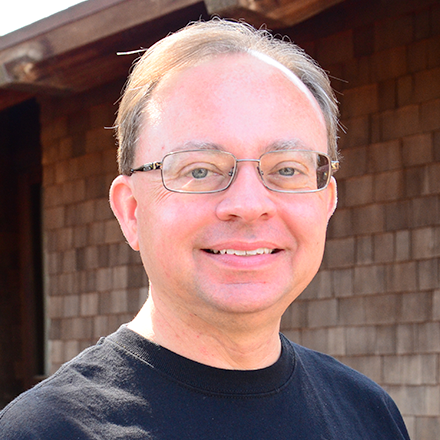
Title: Detecting Changes in Saturn's Rings with Voyager and Cassini
Description:
The origin and evolution of Saturn's rings are one of the great mysteries of the solar system. The narrow and dusty F ring changes on timescales ranging from hourly to yearly, and is so variable it was used as evidence of an alien spacecraft in the science fiction classic Footfall. The Cassini spacecraft took thousands of close-up pictures of the F ring between 2004 and 2017, allowing unprecedented analysis of its lifecycle. In this project, the student will use existing software tools to analyze these images, cataloging and characterizing the changes that occurred during the Cassini mission, and help to develop theories that explain the observed changes.
Qualifications:
Due to the dynamical nature of Saturn's rings, this project is most suited for an astronomy or physics major with experience in classical mechanics above the freshman level, as well as college-level knowledge of statistical analysis. Python programming experience is strongly recommended, including the use of Jupyter notebooks and matplotlib, along with basic knowledge of git and GitHub, Linux, and the use of the command line environment.
Description:
The origin and evolution of Saturn's rings are one of the great mysteries of the solar system. The narrow and dusty F ring changes on timescales ranging from hourly to yearly, and is so variable it was used as evidence of an alien spacecraft in the science fiction classic Footfall. The Cassini spacecraft took thousands of close-up pictures of the F ring between 2004 and 2017, allowing unprecedented analysis of its lifecycle. In this project, the student will use existing software tools to analyze these images, cataloging and characterizing the changes that occurred during the Cassini mission, and help to develop theories that explain the observed changes.
Qualifications:
Due to the dynamical nature of Saturn's rings, this project is most suited for an astronomy or physics major with experience in classical mechanics above the freshman level, as well as college-level knowledge of statistical analysis. Python programming experience is strongly recommended, including the use of Jupyter notebooks and matplotlib, along with basic knowledge of git and GitHub, Linux, and the use of the command line environment.
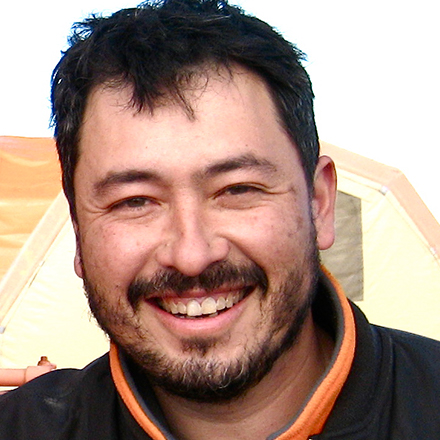
Title: Planning astronaut rover traverses around candidate Artemis Base Camp sites on the Moon
Description:
NASA’s Artemis Program aims to land the first woman and next man at the Lunar South Pole, to enable a sustainable long-term human presence on the Moon, and to prepare for the future human exploration of Mars. A key objective of Artemis is the establishment of a permanent infrastructure on the Moon, the Artemis Base Camp (ABC), along with an attendant multi-asset mobility system. The exact location of this future base has not yet been set, but a few candidate sites are beginning to emerge. Criteria for a good base location, however, are not limited to the suitability of a site for setting up a fixed infrastructure, but consider also access from this base to sites of scientific interest. The research opportunity offered is to identify and map out, for each candidate ABC site identified to date, the most interesting local and regional science targets, the traverse routes to access them, and how such future astronaut road trips on the Moon might be planned.
The student will work with Dr Lee at the SETI Institute to identify optimal “science regions of interest” (SROIs) within the “exploration zone” (EZ) of candidate Artemis Base Camp sites identified to date, and plan potential crewed traverses to these ROIs. Tools to be used will include the NASA Lunar Reconnaissance Orbiter Camera (LROC) Quickmap imaging display tool, NASA JPL and Ames’ “Moon Trek” mapping, modeling, and visualization tool, and Google Moon. Lessons in vehicular science operations from the NASA Haughton-Mars Project (HMP) base camp on Devon Island in the Arctic and from Antarctica will also be drawn upon.
Description:
NASA’s Artemis Program aims to land the first woman and next man at the Lunar South Pole, to enable a sustainable long-term human presence on the Moon, and to prepare for the future human exploration of Mars. A key objective of Artemis is the establishment of a permanent infrastructure on the Moon, the Artemis Base Camp (ABC), along with an attendant multi-asset mobility system. The exact location of this future base has not yet been set, but a few candidate sites are beginning to emerge. Criteria for a good base location, however, are not limited to the suitability of a site for setting up a fixed infrastructure, but consider also access from this base to sites of scientific interest. The research opportunity offered is to identify and map out, for each candidate ABC site identified to date, the most interesting local and regional science targets, the traverse routes to access them, and how such future astronaut road trips on the Moon might be planned.
The student will work with Dr Lee at the SETI Institute to identify optimal “science regions of interest” (SROIs) within the “exploration zone” (EZ) of candidate Artemis Base Camp sites identified to date, and plan potential crewed traverses to these ROIs. Tools to be used will include the NASA Lunar Reconnaissance Orbiter Camera (LROC) Quickmap imaging display tool, NASA JPL and Ames’ “Moon Trek” mapping, modeling, and visualization tool, and Google Moon. Lessons in vehicular science operations from the NASA Haughton-Mars Project (HMP) base camp on Devon Island in the Arctic and from Antarctica will also be drawn upon.
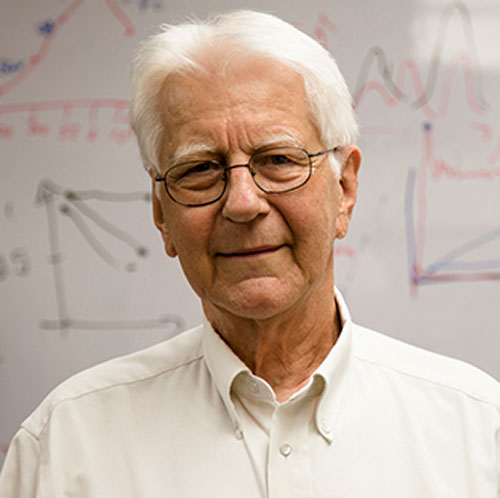
Title: Gene mutation by exposure to highly oxidizing positive hole charge carriers
Description:
All living organisms on Earth are exposed to the effects of electronic charge carriers known as “positive holes”. These charge carriers lie dormant in the rocks of the Earth’s crust in form of point defects called “peroxy defects”, in which two neighboring oxygen anions in common minerals have changed from the usual –2 valence state to the still somewhat enigmatic –1 valence state. When tectonic forces (or other forces) act on the rocks in the Earth’s crust, they cause mineral grains to shift ever so slightly relative to each other. This causes peroxy bonds to break and positive hole charge carriers to be activated. Those highly mobile charge carriers then spread through the rock column and interact with living organisms at the Earth’s surface. Since positive holes are highly oxidizing, they can cause gene mutations. As part of the 2022 REU Summer Program a laboratory experiment will be set up with a hydraulic press to demonstrate the gene-altering effects of stress-activated positive hole charge carriers on yeast cultures.
Description:
All living organisms on Earth are exposed to the effects of electronic charge carriers known as “positive holes”. These charge carriers lie dormant in the rocks of the Earth’s crust in form of point defects called “peroxy defects”, in which two neighboring oxygen anions in common minerals have changed from the usual –2 valence state to the still somewhat enigmatic –1 valence state. When tectonic forces (or other forces) act on the rocks in the Earth’s crust, they cause mineral grains to shift ever so slightly relative to each other. This causes peroxy bonds to break and positive hole charge carriers to be activated. Those highly mobile charge carriers then spread through the rock column and interact with living organisms at the Earth’s surface. Since positive holes are highly oxidizing, they can cause gene mutations. As part of the 2022 REU Summer Program a laboratory experiment will be set up with a hydraulic press to demonstrate the gene-altering effects of stress-activated positive hole charge carriers on yeast cultures.
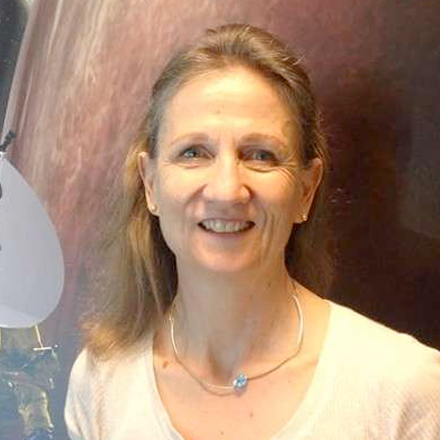
Title: A new integral look at the composition of Pluto’s surface: a ML approach
Description:
Since the New Horizons’ flyby in 2015, Pluto has been the focal attention of multiple analyses directed at understanding the physics of its surface as we see it today, or rather as we captured it in 2015. So far the multifaceted studies have revealed a dynamic world where, because of its extreme environmental conditions, chemistry, geology, and physics play in ways that we cannot easily replicate even in the lab. Therefore, we look at Pluto as our lab, a place where we can observe what happens in those extreme conditions, to gain knowledge to be leveraged in studies of other bodies in the outer Solar System.
One of the most powerful observing tools comes from the hyperspectral datasets that cover the flyby hemisphere. The many thousands of spectra in the LEISA datasets captured the chemical signature of the different terrains. They represent mixtures of the ices and refractory material(s) that have been detected (or not), where the relative abundance of each component has a direct link to a particular physical/geological/chemical mechanism that generated it. Mapping the composition is key to revealing hidden physical events that can help unveil the history of the dwarf planet. Furthermore, the composition of Pluto can be a launching trampoline towards the Trans-Neptunian Objects, an abundant collection of bodies that are presumed to be the leftovers of the formation of the Solar System from the primordial nebula.
So far hyperspectral analyses have focused mainly on multivariate statistical approaches such as clustering, principal component, and crosscorrelations, and physical ones, i.e. radiative transfer modeling. We propose a new study that brings together, exploiting the power of machine learning, the two approaches -statistical and physical- to deduct the composition of Pluto’s terrains. In this approach we will allow the tool to explore not only the known chemical components but also new ones that so far have gone undetected because overpowered by the more abundant ones.
To achieve our goal we will use a radiative transfer modeling tool to create a database of synthetic spectra both of pure and mixed components to be used as input to the ML engine.
Description:
Since the New Horizons’ flyby in 2015, Pluto has been the focal attention of multiple analyses directed at understanding the physics of its surface as we see it today, or rather as we captured it in 2015. So far the multifaceted studies have revealed a dynamic world where, because of its extreme environmental conditions, chemistry, geology, and physics play in ways that we cannot easily replicate even in the lab. Therefore, we look at Pluto as our lab, a place where we can observe what happens in those extreme conditions, to gain knowledge to be leveraged in studies of other bodies in the outer Solar System.
One of the most powerful observing tools comes from the hyperspectral datasets that cover the flyby hemisphere. The many thousands of spectra in the LEISA datasets captured the chemical signature of the different terrains. They represent mixtures of the ices and refractory material(s) that have been detected (or not), where the relative abundance of each component has a direct link to a particular physical/geological/chemical mechanism that generated it. Mapping the composition is key to revealing hidden physical events that can help unveil the history of the dwarf planet. Furthermore, the composition of Pluto can be a launching trampoline towards the Trans-Neptunian Objects, an abundant collection of bodies that are presumed to be the leftovers of the formation of the Solar System from the primordial nebula.
So far hyperspectral analyses have focused mainly on multivariate statistical approaches such as clustering, principal component, and crosscorrelations, and physical ones, i.e. radiative transfer modeling. We propose a new study that brings together, exploiting the power of machine learning, the two approaches -statistical and physical- to deduct the composition of Pluto’s terrains. In this approach we will allow the tool to explore not only the known chemical components but also new ones that so far have gone undetected because overpowered by the more abundant ones.
To achieve our goal we will use a radiative transfer modeling tool to create a database of synthetic spectra both of pure and mixed components to be used as input to the ML engine.
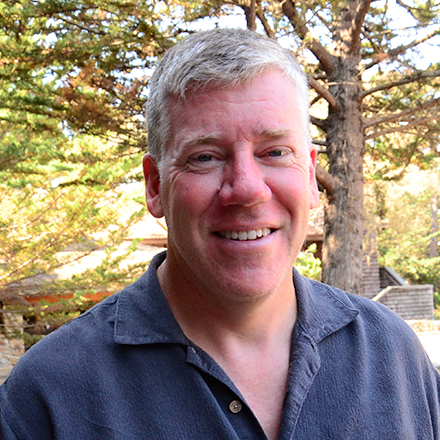
Title: Studying TESS Exoplanet Candidate Detections
Description:
Dr Douglas Caldwell is an astronomer who studies the detection and characterization of exoplanets. NASA’s Kepler mission showed us that planets, including small potentially habitable ones, are common. Years after Kepler ceased observations, new planets are still turning up in the data. The Transiting Exoplanet Survey Satellite (TESS), operating since 2018, has already found many planets in our Solar neighborhood. As TESS data continue to pour in, the number of detections of potential planets is outpacing the ability of scientists to manually keep up.
The TESS Science Processing Operations Center is currently searching the light curves of 160,000 stars per month from the TESS full-frame image data and detecting thousands of potential planets, known as Threshold Crossing Events (TCE). Currently, the TCEs are recorded in the TESS archive, but are not systematically vetted to determine which of them might be promising exoplanet candidates.
The student will work to refine and develop tools to help classify and vet the TESS full-frame image detections. The student will start by using a set of existing vetting tools developed for TESS two-minute target data and tune them to work on the full-frame image results. The student will analyze the detections and develop statistical models to characterize and classify them. Depending on the the student’s interest, they may work with a group that is using a deep neural network to classify the TESS TCEs by helping to incorporate these full-frame image results into the machine learning model. The work will involve reviewing scientific literature; running, modifying, and writing code to analyze data; and writing-up results. The ideal outcome of this project will be a set of new planet candidates from TESS data and a scientific publication describing the work.
Qualifications:
This project is ideal for someone who is interested in exoplanets and has a solid programming background. A familiarity with either the Python or MATLAB programming languages is beneficial, as is interest in, or experience with machine learning techniques. The student should have a background in science or engineering and an interest in learning about detection statistics.
Description:
Dr Douglas Caldwell is an astronomer who studies the detection and characterization of exoplanets. NASA’s Kepler mission showed us that planets, including small potentially habitable ones, are common. Years after Kepler ceased observations, new planets are still turning up in the data. The Transiting Exoplanet Survey Satellite (TESS), operating since 2018, has already found many planets in our Solar neighborhood. As TESS data continue to pour in, the number of detections of potential planets is outpacing the ability of scientists to manually keep up.
The TESS Science Processing Operations Center is currently searching the light curves of 160,000 stars per month from the TESS full-frame image data and detecting thousands of potential planets, known as Threshold Crossing Events (TCE). Currently, the TCEs are recorded in the TESS archive, but are not systematically vetted to determine which of them might be promising exoplanet candidates.
The student will work to refine and develop tools to help classify and vet the TESS full-frame image detections. The student will start by using a set of existing vetting tools developed for TESS two-minute target data and tune them to work on the full-frame image results. The student will analyze the detections and develop statistical models to characterize and classify them. Depending on the the student’s interest, they may work with a group that is using a deep neural network to classify the TESS TCEs by helping to incorporate these full-frame image results into the machine learning model. The work will involve reviewing scientific literature; running, modifying, and writing code to analyze data; and writing-up results. The ideal outcome of this project will be a set of new planet candidates from TESS data and a scientific publication describing the work.
Qualifications:
This project is ideal for someone who is interested in exoplanets and has a solid programming background. A familiarity with either the Python or MATLAB programming languages is beneficial, as is interest in, or experience with machine learning techniques. The student should have a background in science or engineering and an interest in learning about detection statistics.
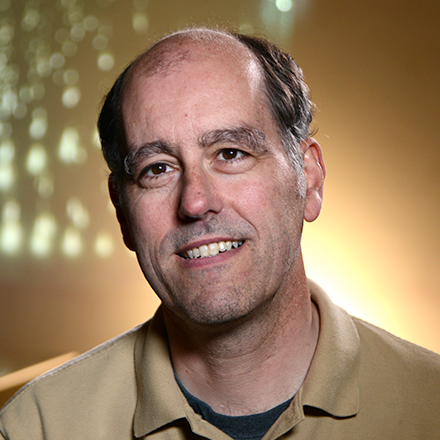
Title: TBD
Description: TBD
Description: TBD
